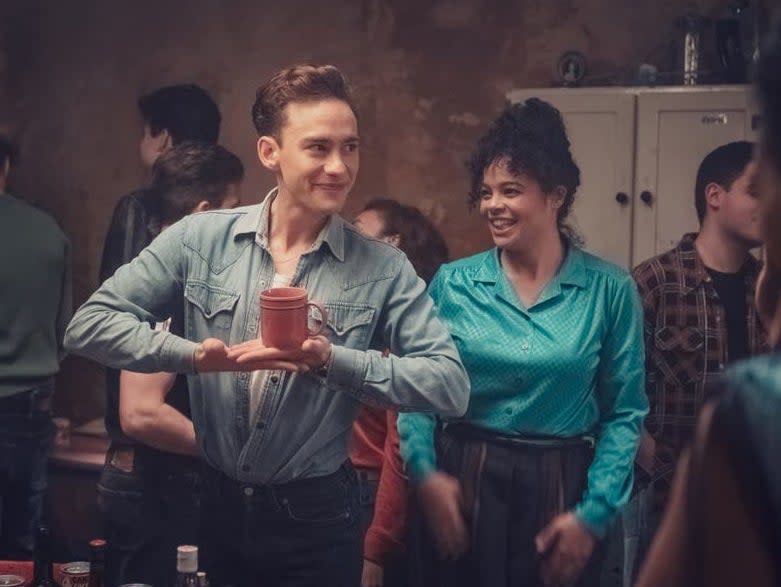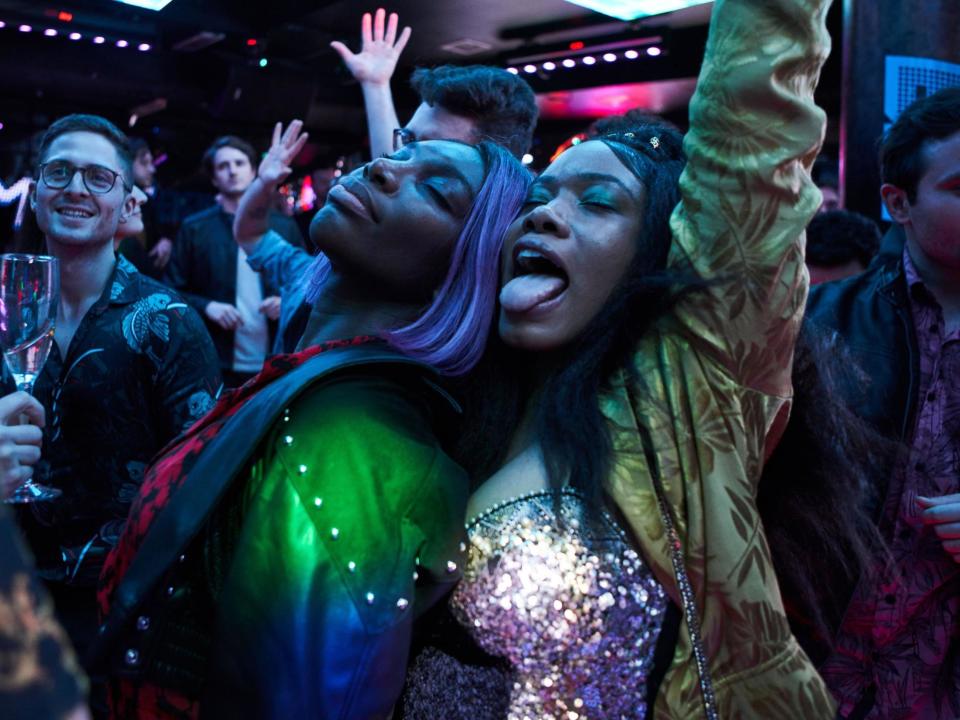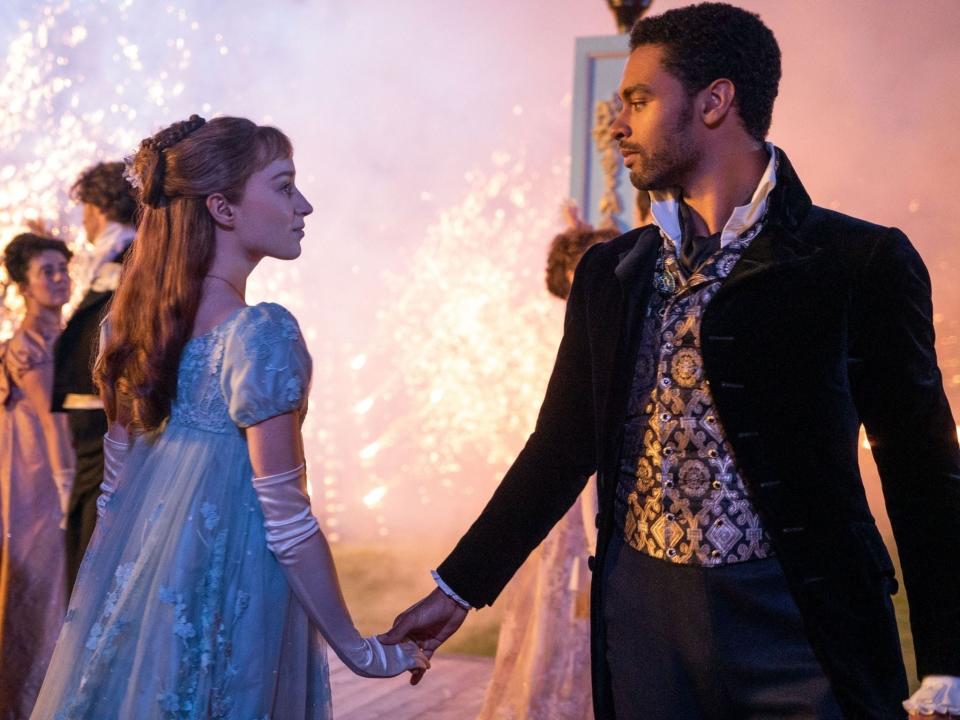‘A good soundtrack builds a world’ – How music has transformed TV, from It’s a Sin to Bridgerton

Music supervisors are finding new and daring ways to incorporate songs on television
(Getty Images/iStockphoto)The past year has been nothing short of a dumpster fire but God, it’s yielded some great TV. And maybe it’s all this extra time we have on our hands – or perhaps our collective sensory deprivation – that’s leading us to take keen notice of any stimulation thrown our way, but it seems we’re watching this latest cadre of shows with newly opened ears.
Whether it was Anya Taylor Joy’s chess genius drunkenly dancing her way to denouement via the unmistakable bop of The Shocking Blue’s “Venus” in The Queen’s Gambit or the unknown emotional depths of Daft Punk suddenly illuminated by Michaela Coel’s tour de force I May Destroy You, needle-drops (when a pre-existing song is played over a scene) are responsible for some of the most memorable on-screen moments as of late.
Recent television is proving that music supervisors – that person whose job it is to curate such pitch-perfect tracks and then get them licensed for use – are finding increasingly interesting ways of creating scenes that are more than just the sum of their audio and visual parts.
It’s a Sin is full of such scenes. Russell T Davies’s miniseries about a group of young gay men in London at the start of the AIDS epidemic is the TV equivalent of chopping onions. The show (itself named after Pet Shop Boys’ 1987 single) features music heavily, and while its soundtrack includes some of the biggest smash hits of the Eighties – Blondie, Erasure, Kate Bush, The Teardrop Explodes – it manages to produce a feeling more substantial than that generic, cookie cutter kind of nostalgia.
Compare it with Stranger Things, for example, another show that leans on the Eighties’ Greatest Hits for emotional pay-off. Except in this case, the reward is often surface-level pathos, provoking little more than a flicker of recognition. But having been mined from Davies’s own past (as much of the show’s story is), the songs of It’s a Sin are more concerned with evoking authentic emotion than situating its audience in a time frame.

I May Destroy You takes a different approach to the same effective end. The groundbreaking series – which sees Coel play protagonist Arabella, who experiences a sexual assault – defies classification. It is wryly funny at points. It is irreverent and sincere, as well as sublimely unnerving.
Over its 12 episodes, the series explores Arabella’s rape from competing perspectives. Its music – a mix of gospel, women-led hip-hop and British up-and-comers – is an extension of that blend of tones and contradictions. “That was something Michaela and [co-director] Sam [Miller] were very clear about from the beginning,” says Ciara Elwis, the show’s music supervisor and Coel’s partner in creating its indelible soundtrack. “They didn’t want the viewer to be taken in a certain direction by the music.”

Her take goes against everything we assume about soundtracking, something that is most often used to underscore whatever prescribed set of emotions are being depicted on screen. It’s a shortcut to the heartstrings: sad songs make sad scenes sadder. Fifteen years on and I still can’t hear Jeff Buckley’s cover of “Hallelujah” without thinking of Marissa’s death at the end of The OC. Cue the sobbing; job done.
But in I May Destroy You, Elwis and Coel hijack that shortcut to pair scenes with the opposite sort of music you’d expect. Visuals that would feel more in key with the melancholic vocals of Mazzy Star are given upbeat trumpets courtesy of Leicester-based alt group Easy Life and their sample of Dionne Warwick’s “Loneliness Remembers What Happiness Forgets”. It’s the dissonance that makes it stick. The device is attention-grabbing, although it’s far from new. Other shows have overdone the peppy-song-upsetting-scene formula so much that now, watching a guy get impaled while the Backstreet Boys harmonise makes me yawn (ahem, Umbrella Academy).
I May Destroy You, though, approaches the trope with sincerity. Every scene is scored with purpose, none more so than its deployment of “It’s Gonna Rain” by Rev Milton Brunson Thompson’s community singers. The gospel track plays in episode one as Arabella stumbles out of a bar and blacks out after being drugged. Her vision clouds as she trips over and a sense of dread builds in time with the song’s choral harmonies, culminating in a crashing crescendo. It’s one of the show’s most unforgettable moments. But it almost didn’t happen.
“A lot of the content in the show is not the kind of thing that a Christian religion wants to be seen alongside,” says Elwis, who faces similar hurdles licensing music for another of her projects, Netflix’s Sex Education (“Some people just don’t want their song being used over a scene of people wanking,” she shrugs). In this instance, though, she fought for it. Elwis penned a letter to the song’s rights holders explaining how the track would be used, with Coel – who spent some time in the Pentecostal church – also adding a few personal words. The song was so crucial to Coel’s vision, Elwis says, that the scene was re-edited in order for it to be cleared.

Its soundtrack also works hard to put British musicians in front of a transatlantic audience (the series was released on HBO in the US). “That was an aim that Michaela made clear from the beginning,” Elwis says. London-born rapper Little Simz, whose down-tempo hip-hop features on more than one occasion, has said people contact her all the time to say they found her via Coel’s drama. Arlo Parks is another musician going from strength to strength since the series’ debut – not solely because of it, for sure, but no doubt bolstered by the exposure it afforded. “I hope that the audience discovers British musicians the same way that One Tree Hill introduced me to scuzzy Brooklyn bands in the Noughties,” Elwis says with a laugh.
She says, however, that using budding artists instead of big hitters is also a matter of keeping costs down. “A huge part of my job is budgeting,” she explains. “I’ll read a script that references a very famous song by a very famous artist and immediately I’ll flag that it will be an extremely expensive ten-second moment.” When it comes to I May Destroy You then, a series that consists solely of commercial tracks, licensing recognisable hit after hit would come at too high a price-tag. But crucially, when it really counts – as with “It’s Gonna Rain” and Daft Punk’s “Something About You” – they make it happen somehow.
The same steadfast commitment to getting it right steered the music direction of HBO’s Industry. The series focuses on a group of graduates vying for a job at a hardcore (read: exploitative) London investment bank. The viewing experience is like watching a faulty pressure cooker overdue for an explosion – a chaotic, Red-Bull-vodka energy that music supervisor Ollie White distils into some three-minute songs.
Industry’s EDM-based soundtrack isn’t far off what you’d expect from a series about a bunch of coked-up gilet-wearing finance bros (the women are finance bros too) – but White’s approach feels fresh, which is not so easy in a TV landscape flooded with London-based shows. “It was a lot of trial and error to make it stand out, we had to try lots of different things,” he says over Zoom. While I May Destroy You’s commercial tracks thrived in the absence of a traditional score, the winning formula for Industry turns out to be a symbiotic melding of the two. White cites the 2019 film Waves as an influence; the coming-of-age movie buoyed its original score with a near wall-to-wall soundtrack that comprised Tame Impala, Frank Ocean, and SZA.
Industry’s visuals are bleak. Characters, under the glare of strip lights, are leached of all colour and the London depicted on screen is sterile and unforgiving. A sticky, comedown sweat clings to the lens and doesn’t lift once over eight episodes. And yet – thanks to its music – there is still something enticing about the trading floor; some beauty to be found in the ugly city. “From the moment someone tunes in to the moment that the show cuts to black, we wanted to transport them to being 21 in London,” White says. The synth-driven score, crafted by EDM producer and first-time scorer Nathan Micay, tingles with the sort of “naive optimism, euphoric possibility and intensity” that shape your early twenties.
“A good soundtrack builds a world,” White says. And the statement is nowhere truer than in BBC’s The Serpent, where music plays as much a role in world building as storylines and cinematography do. The new series – based on the crimes of Charles Sobhraj, who murdered at least 12 people between 1963 and 1976 on the hippie trail around southeast Asia – serves up a visual feast: colour-co-ordinated suits, egregiously long sideburns, and flares are all seen through a thick fog of sunshine and cigarette smoke. Music supervisor Liz Gallacher dishes up a satisfying sonic buffet to match.
Rather than slap together a playlist of the Seventies Greatest Hits, Gallacher opted for some deep cuts and obscurities to give a different shading to a familiar era. For the LA-based connoisseur, the highest value is authenticity. “I dug around to find things that weren’t the most obvious choices. I looked for stuff that would’ve been playing in Thailand and Nepal at that time,” says Gallacher, who set out creating a soundtrack that rings familiar, but crucially not cliché. “You want it to feel of the moment, but you don’t want it to feel dated,” she offers. Rita Chao and the Quest’s “How to Catch a Girl” in episode one is an ideal example. The familiar textures of music of the era are suddenly made fresh and new in the Mandarin-language track.
The same can be said of Netflix’s latest ratings juggernaut Bridgerton. The heady period drama – based on Julia Quinn’s romance novels of the same name – is the latest feature to infuse history (in this case, Regency-era London) with 21st-century sensibilities, including lots more sex. There is a certain thrill in seeing stuffy rules being smashed to pieces: witnessing cast diversity as opposed to the usual overwhelming whiteness of costume dramas; sex scenes shot from the female gaze; elaborate balls set to Ariana Grande.

Music supervisor Alexandra Patsavas (previously The OC, Gossip Girl, Twilight, Grey’s Anatomy) was brought on to the project before production even began. “We talked a great deal about the sound of the Regency era viewed with a modern lens, and how that would resonate with the audience,” Patsavas says over email.
Following the series debut, Twitter lit up in a flurry of posts asking the same question: “Wait, did I just hear Thank U Next in Bridgerton?!”. Viewers continued the game of “guess that song” as orchestral renditions of Ariana Grande, Billie Eilish, Shawn Mendes, and Taylor Swift – courtesy of the Los Angeles based group Vitamin String Orchestra – popped up unexpectedly over its eight episodes. Despite its blatant anachronism, the sound is still remarkably fitting; sweeping string arrangements feel at home with the high ceilings, opulent gardens, and bushy sideburns of the 19th century. As with The Serpent, you know the song, but not like this.
We’ve been living in television’s musical golden age for some time now – the foundations of which were no doubt laid by the likes of older shows including Twin Peaks and The OC, as well as the industry’s early innovators such as Randall Poster and Patsavas. But now, more than ever, together with enthusiastic directors, music supervisors are finding new and daring ways to incorporate songs on television. The (dis)harmony between what we hear and what we see on the small screen is more elemental than ever, and that is surely music to all our ears.
Read More
Callum Scott Howells on It’s a Sin and losing loved ones to Covid
The Queen’s Gambit, Emily in Paris and Bridgerton are all the same


